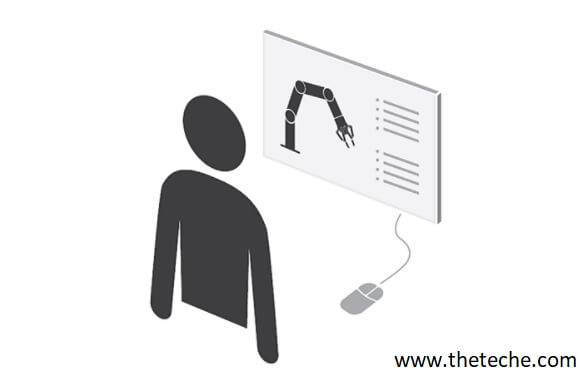The first textual robot language was WAVE, developed in 1973 as an experimental language for research at the Stanford Artificial Intelligence Laboratory.
Research involving a robot interfaced to a machine vision system was accomplished using the WAVE language. The research demonstrated the feasibility of robot hand-eye coordination.
Development of a subsequent language began in 1974 at Stanford. The language was called AL and it could be used to control multiple arms in tasks requiring arm coordination.
Many of the concepts of WAVE and AL went into the development of the first commercially available robot textual language, VAL (for Victor’s Assembly Language, after Victor Scheinman).
VAL was introduced in 1979 by Unimation, Inc., for its PUMA robot series. This language was upgraded to VAL II and released in 1984.
Work in robot language development was also taking place at the T. J. Watson Research Labs of the IBM Corporation, starting around 1976.
Two of the IBM languages were AUTOPASS and AML (A Manufacturing Language), the second of which has been commercially available since 1982 with IBM’s robotic products. Both of these languages are directed at assembly and related tasks.
Some of the other textual languages for robots that should be mentioned include RAIL, introduced in 1981 by Automatix for robotic assembly and arc welding, as well as machine vision; MCL (Manufacturing Control Language); developed under U.S. Air Force sponsorship by McDonnell-Douglas as an enhancement of the APT (Automatically Programmed Tooling) numerical control part programming language; and HELP, available from the General Electric Company under license from the Italian firm DEA.
| Read More Topics |
| Methods of robot programming |
| Lead Through Programming Methods |
| Proximity and range sensor |
| Uses of sensors in robotics |






